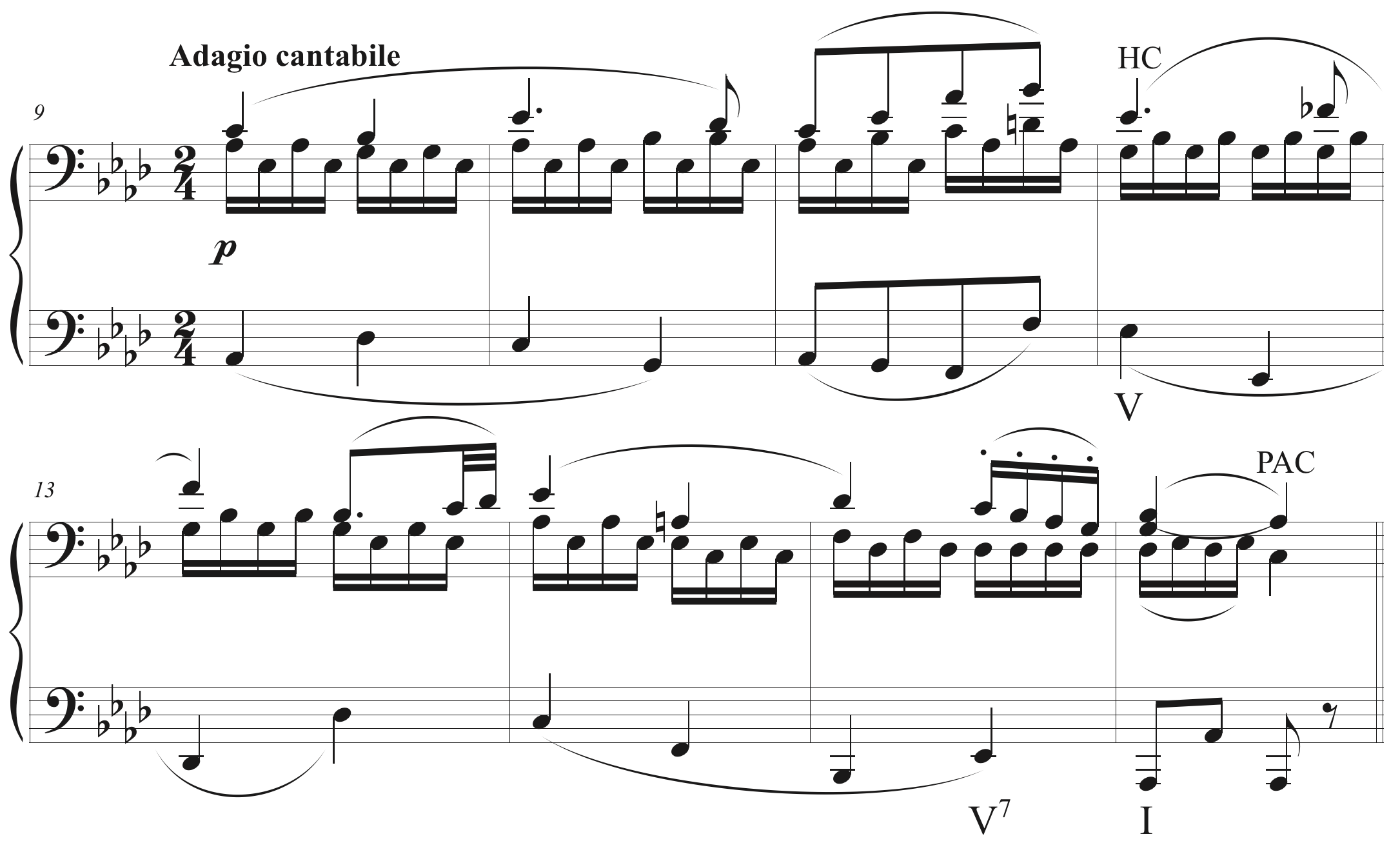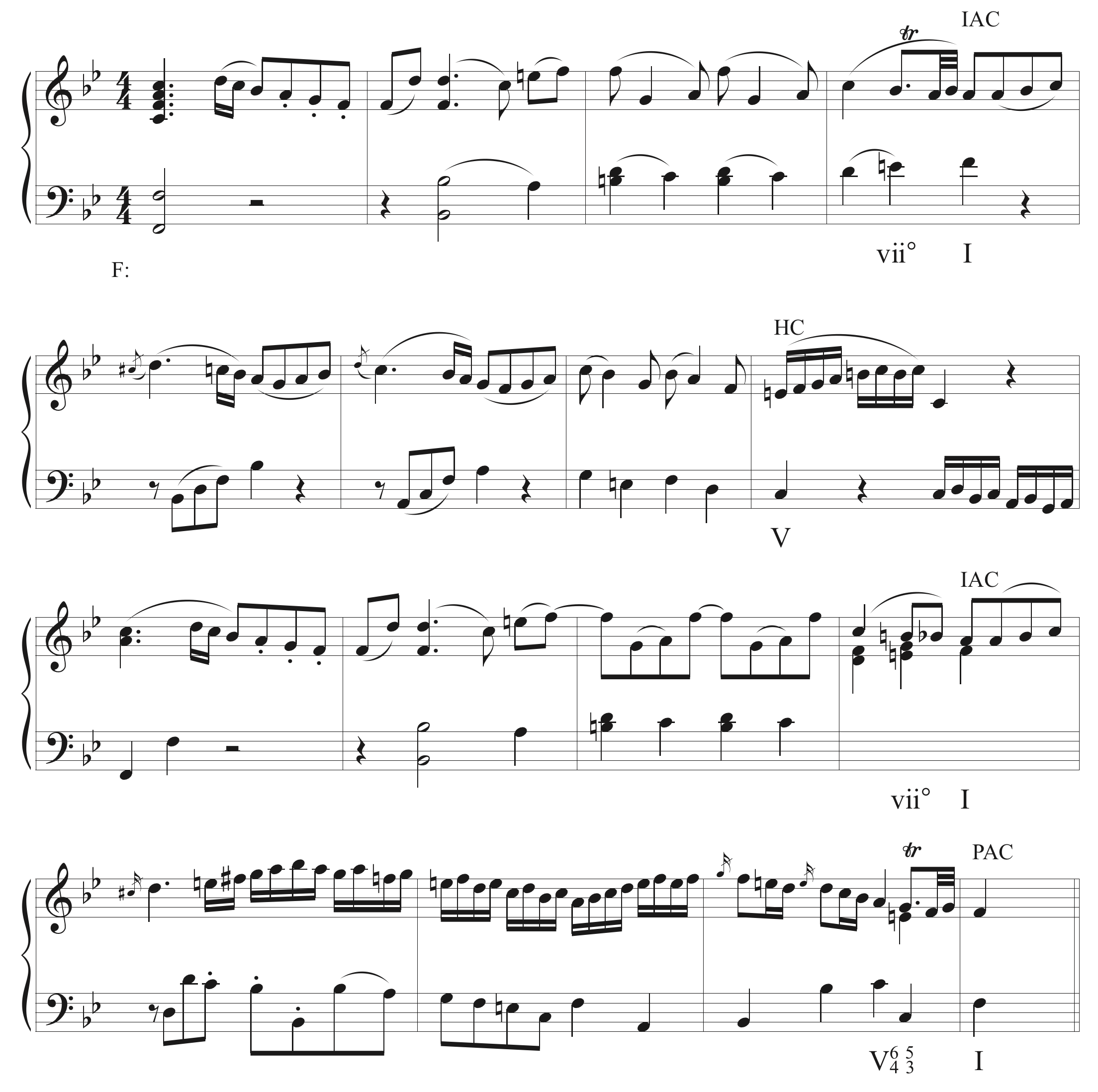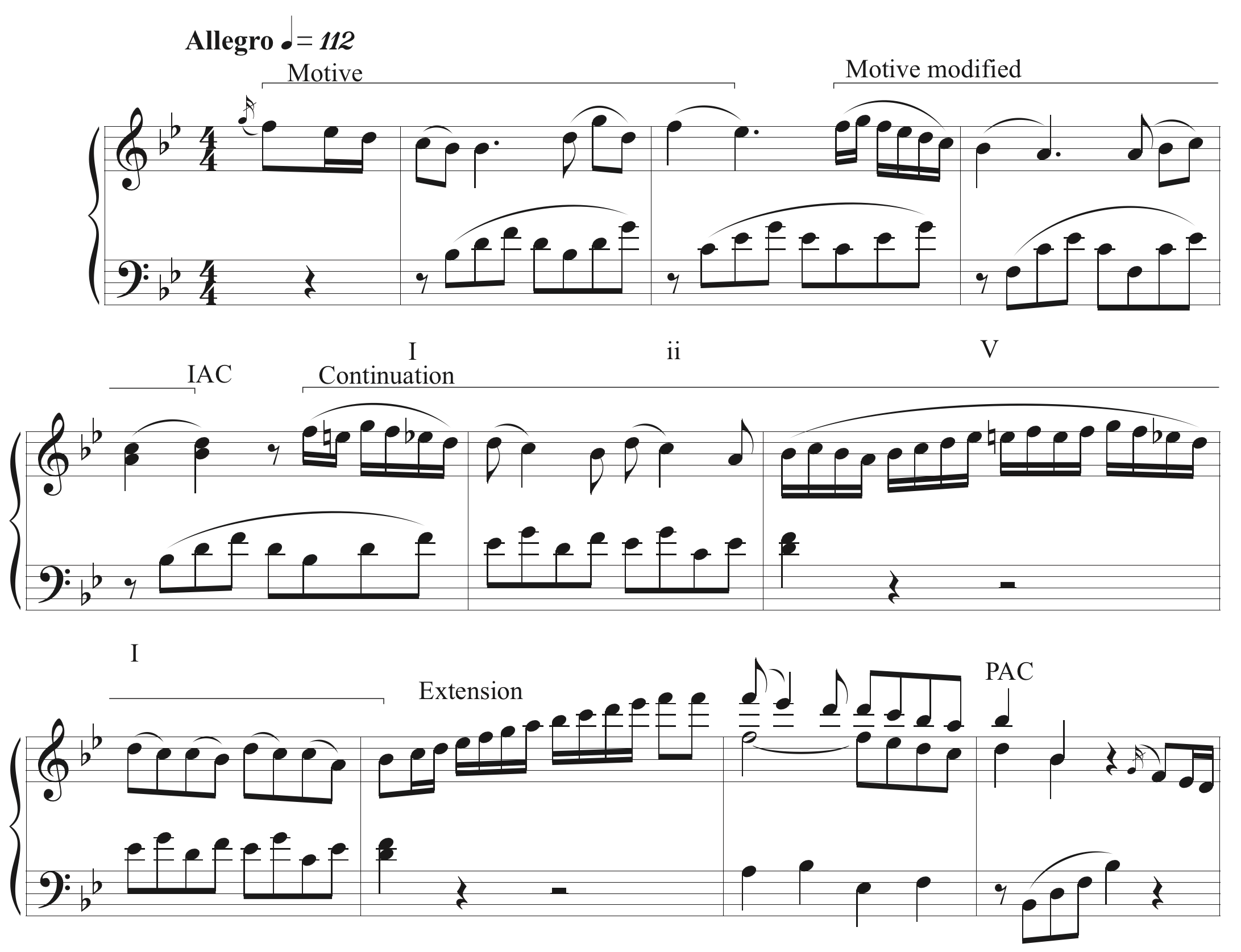Phrases and Periods
A phrase is a complete musical thought. It is concluded with a cadence (see section on cadences). A phrase can be either complete (PAC or IAC) or partial (incomplete - HC).
A period is two phrases where one usually completes the idea of the first. The first cadence is usually partial, and the second is complete. There are two broad types: Parallel, in which the two phrases begin the same, but end differently, and Contrasting, in which the phrases begin differently and seem to be only related by the weak-strong cadence relationship. Some authors cite other types, such as sequential, which is a form of parallel period, and inverted, which might be seen as a contrasting period.
A Parallel Period
Mozart: Sonata in B-flat Major, III mm. 1-8

A Contrasting Period
Beethoven: Piano Sonata op. 13, II mm. 1-8

A double period is four phrases where the first pair form a period ending with an inconclusive cadence and the second pair form a period ending with a conclusive cadence.
Mozart: Piano Sonata K. 333 mm. 23-28

Two or more phrases that do not form a period are called a phrase group
A phrase structure built off a motive in a 2+2+4 arrangement is called a sentence. A sentence may also be a period, but the 2 bar motive with a dominant statememnt of the motive makes it a sentence.
Mozart, Sonata in Bb, K. 333, I, mm. 1-10
